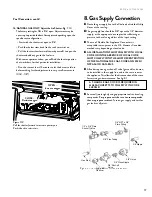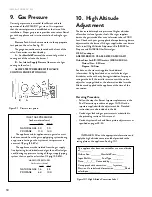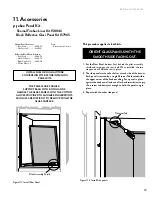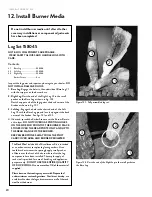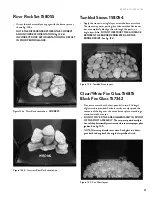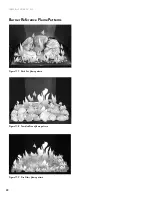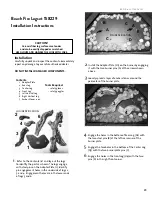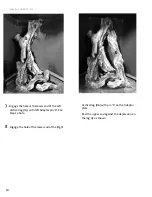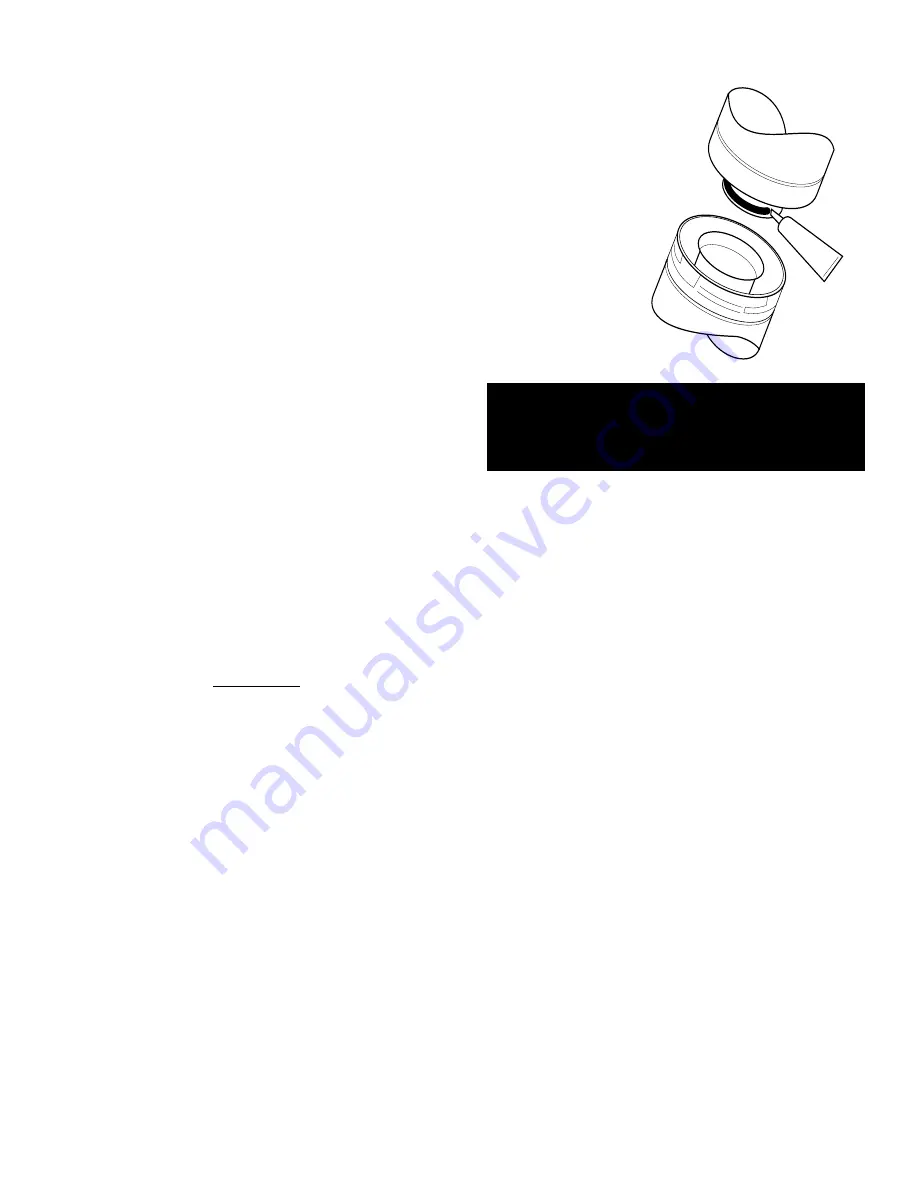
9
130112_Rev 2 GF 160 DV 2/22
Vent Restriction
The GF 160 DV is equipped with an Exhaust Restrictor Plate
which enables regulation of the exhaust gas flow. The plate
prevents overly-strong draft that can cause poor combustion
and weak flame picture.
Follow the guidelines below and on the
following pages to determine the correct restrictor plate setting
for your particular installation.
Exhaust Restrictor
The Exhaust Restrictor plate is located within the firebox
exhaust outlet. It is adjusted by rotating the dial on the right
side of the outlet within a range beginning at the factory-set,
fully open position (no restriction) to a fully restricted position.
See Figs. 6.2 and 6.4. The Minus (-) and Plus (+) signs on the
dial relate to degrees of restriction, from zero to approximately
70%. The four, lettered positions correlate to the termination
zones (A,B,C,D) diagramed in figure 6.4. Use the diagram to
determine the degree of restriction and shutter setting that
correlates to your vent configuration.
Adjusting Exhaust Restrictor Plate:
1. Use a 10 mm open-end wrench to loosen the lock nut
and then use the pivot tab to set the dial to the position
appropriate to your termination zone. See figs. 6.2-6.4, page
10.
2. Re-tighten the lock nut after adjustment.
6. Venting Requirements
The Jøtul GF 160 DV gas stove may be installed with a vertical
or horizontal termination and must conform to the configuration
requirements described below.
This appliance is approved for use with vent systems from
the following manufacturers:
• M&G DuraVent DirectVent Pro and GS Series
• American Metal Products (Amerivent)
• Security Chimneys International, Ltd. (Secure Vent)
• Selkirk Metalbestos (Direct Temp)
• Metal-Fab, Inc. (Sure-Seal Direct Vent)
• Industrial Chimney Corp. (ExcelDirect)
• Bernard Dalsin Mfg. (Pro Form)
• Olympia Chimney Supply, Inc. (Ventis Direct Vent)
Use parts of one manufacturer only - DO NOT MIX VENT
COMPONENTS FROM DIFFERENT MANUFACTURERS
IN THE SAME SYSTEM.
Installation of any components not manufactured or
approved by Jøtul or failure to meet all clearance requirements
will void all warranties and could result in property damage,
bodily injury, or serious fire.
The approved vent configurations described in this manual
are derived from extensive testing under controlled laboratory
conditions. Gas appliance performance can be negatively
affected by variables present in the installation environment,
i.e: atmospheric pressure, strong prevailing winds, adjacent
structures and trees, snow accumulation, etc. These conditions
should be taken into consideration by the installer and stove
owner when planning the vent system design.
IMPORTANT
• JOINT SEALING REQUIREMENT: APPLY A 1/8” BEAD OF
HIGH-TEMPERATURE SEALANT OR MIL-PAC® TO THE
MALE SECTION OF THE INNER VENT PIPE. THE CEMENT
SHOULD FORM A SEAL BETWEEN THE INNER AND
OUTER PIPES.
• NEVER MODIFY ANY VENTING COMPONENT, OR USE
ANY DAMAGED VENTING PRODUCT.
• THE GAS APPLIANCE AND VENT SYSTEM MUST BE
VENTED DIRECTLY TO THE OUTSIDE OF THE BUILDING
AND NEVER ATTACHED TO A CHIMNEY SERVING A SOLID
FUEL OR GAS BURNING APPLIANCE. EACH DIRECT VENT
GAS APPLIANCE MUST HAVE ITS OWN SEPARATE VENT
SYSTEM. COMMON VENT SYSTEMS ARE PROHIBITED.
• IF THE VENTING SYSTEM IS DISASSEMBLED FOR
MAINTENANCE OR ANY OTHER REASON, IT MUST
BE PROPERLY REASSEMBLED AND RESEALED
IN ACCORDANCE WITH THE ORIGINAL VENT
MANUFACTURER’S INSTRUCTIONS.
CONFIRM THAT ALL INTERLOCKING JOINTS ARE TIGHTLY
RE-SECURED AND THAT ALL SEALS ARE MAINTAINED
INTACT.
REINSTALL ANY FASTENERS AND REPLACE AS
NECESSARY.
Figure 6.1.
DO NOT USE SILICONE
SEALANT.
RE-INSTALL THE TOP PLATE BEFORE
CONNECTING VENT TO THE STOVE.

















